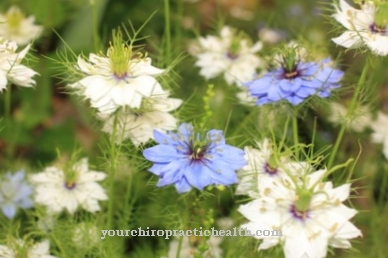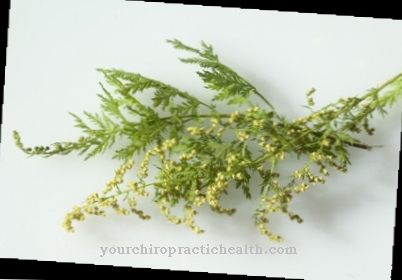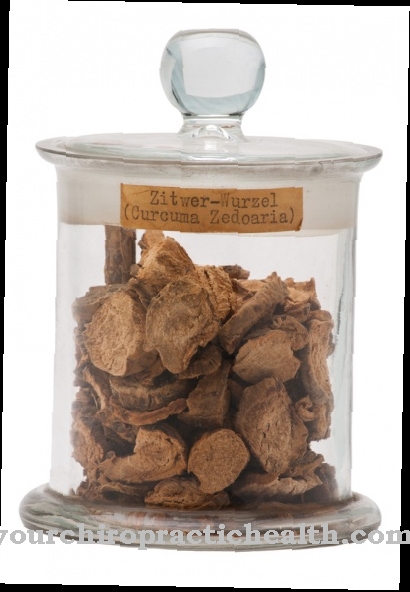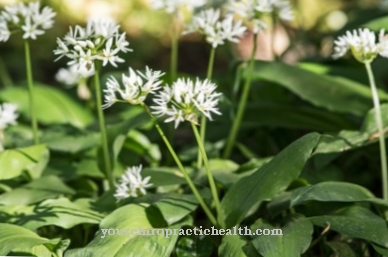In the Dead nettle it is a close relative of the well-known nettle. The dead nettle is not only less aggressive, it can also be used for various medical purposes. Side effects are usually not to be expected.
Occurrence & cultivation of dead nettle

Originally comes the Dead nettlefrom Europe and Asia. However, because of its healing properties, it can now also be found in cultivation in North America. The dead nettle often prefers meadows, garden fences and hedges. The plant was already used for medicinal purposes in the Middle Ages.
The plant comes from the lip flower family. It reaches a height of about 40 centimeters. Leaves are divided from the stem. These have a pointed shape, which is reminiscent of the leaves of the nettle. The outer edge has some strong indentations. The leaves of the dead nettle are hairy, but have no stinging hairs. As with the nettle, the surface is wrinkled. In the months between May and September the dead nettle flowers bloom.
During this time, the buds give off a honey-like scent, while the rest of the plant is perceived as odorless. The different types of dead nettle also reveal different flower colors. For example, there are white, red or yellow flowers. With regard to their effect, no very different properties can be determined. When the flowering period is over, small fruits develop from the flowers. To distinguish dead nettle and nettle from each other, it is advisable to take a closer look at the flowers.
Effect & application
Not all elements of dead nettle are suitable for medicinal use. The flowers, including the petals, are used here in particular. Accordingly, the harvest time is between May and September when the plant blooms. Doctors and pharmacists often know the dead nettle by its name Lamii albi flos. The quality standard of the product is regulated by the German Medicines Codex.
Often the plant parts are dried before medical use. The healing properties can be attributed to the ingredients of dead nettle. In addition to iridoid and secoiridoid glucosides, triterpene saponins, phenol carboxylic acids / caffeic acid derivatives and tannins, flavonoids and mucilage can also be found in the plant. The application takes place internally or externally depending on the complaints.
Folk medicine recommends the consumption of dead nettle tea particularly often. This can usually be purchased at the pharmacy or drug store. There are both tea blends and the pure form of the plant. If the leaves of the plant are collected themselves, the dosage is around one gram per half liter of water. So that the active ingredients can develop in the body, the tea should be steeped for at least five minutes and drunk several times a day.
Applied externally, those affected can reach for the plant in the form of compresses, baths or ablutions. The spectrum of activity of the dead nettle is broad. It has antibacterial, calming, antispasmodic, expectorant, diuretic, but also hemostatic and blood-purifying properties. The dead nettle was already considered a medicinal plant for women in the Middle Ages.
Until today it is mainly used for existing menstrual cramps or white flow. But its effectiveness is not limited to relieving period pain. It can be used by both women and men for various symptoms and diseases without the need for chemical ingredients.
Importance for health, treatment & prevention
Due to its different modes of action, the dead nettle is suitable, for example, for asthma, coughs, colds or bronchitis. The substances ensure that the mucus in the lungs dissolves and the symptoms disappear quickly in this way. The flowers can also be used effectively for inflammation of the oral and pharyngeal mucous membrane as well as for gingivitis and sore throat. In rare cases, dead nettle also helps with inflammation of the gastrointestinal tract.
The anti-inflammatory property can probably be attributed to the iridoids it contains. These succeed in reducing certain inflammatory mediators. At the same time, the tannins react with proteins in the mucous membrane. This creates a layer that protects the skin from other pathogens. Externally, the plant is suitable for the alleviation of boils, eczema, light burns and varicose veins. Applying a compress or adopting another method can aid poorly healing wounds in the healing process.
In women, the plant is also specifically used for menstrual cramps, menopausal symptoms or white flow. You should be able to regulate the menstruation in its strength. For example, if the bleeding is profuse, taking the plant can reduce blood loss, while stimulating a weak period. Men, on the other hand, benefit from the ingredients in the event of swelling of the prostate.
The diuretic properties alleviate symptoms that affect the bladder. Dead nettle is therefore suitable in different ways for the treatment of symptoms that arise due to diseases. In doing so, it does not succeed in preventing inflammation; it can only alleviate existing problems afterwards. Nevertheless, it can play a role in everyday health. Although it has no chemical substances, its efficiency should not be underestimated. In contrast to conventional medicine, there are no side effects when using the plant.




























